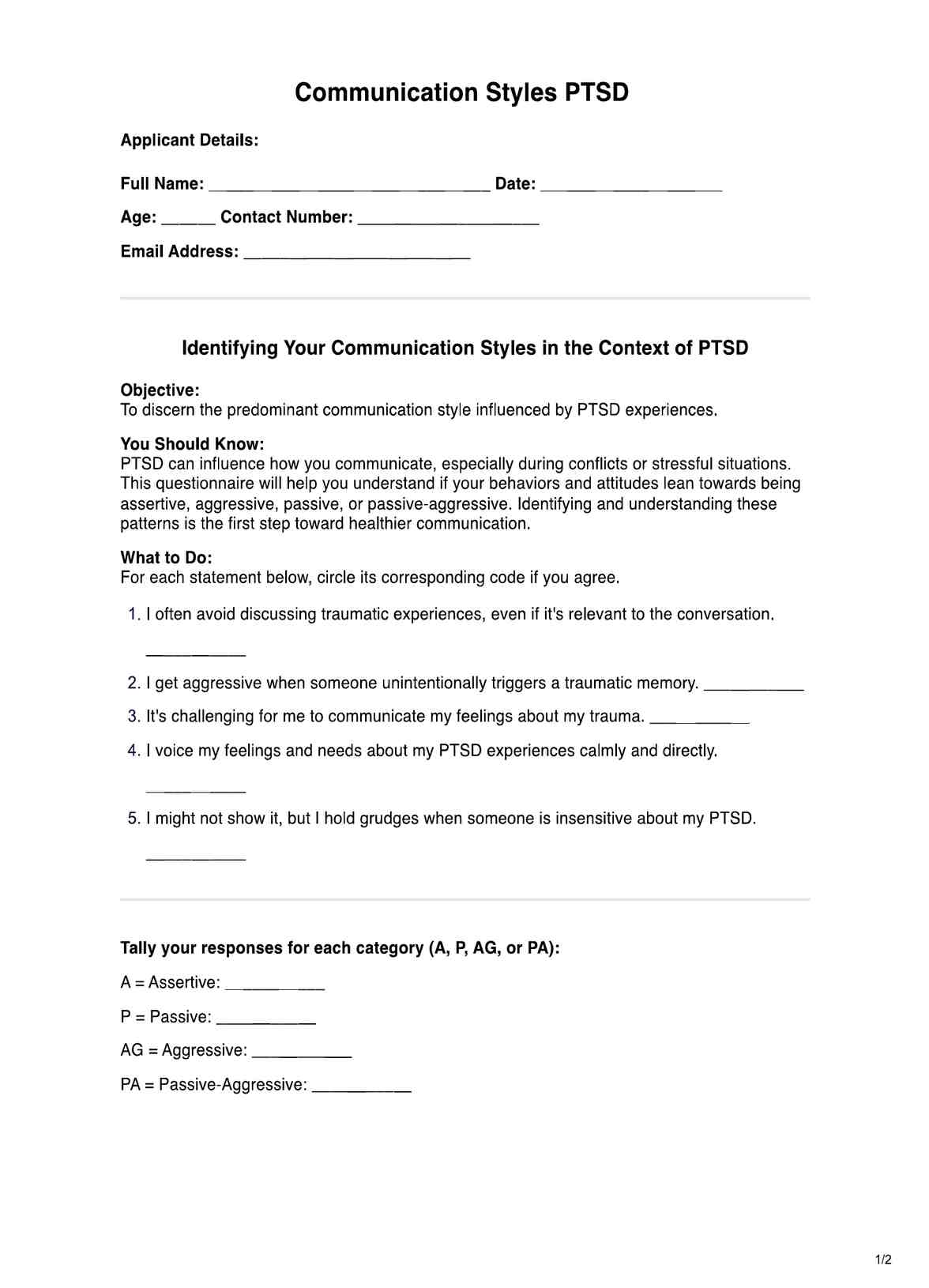Typically, it can take 30 minutes to an hour, depending on individual reflection and discussion depth.

Communication Styles PTSD Worksheet
Empower your journey to recovery with the Communication Styles PTSD Worksheet. Enhance clarity, improve relationships, and accelerate therapeutic progress today.
Use Template
Communication Styles PTSD Worksheet Template
Commonly asked questions
This worksheet can be accessed and downloaded as a PDF for ease of use.
It's most effective during therapy sessions under a professional's guidance, especially after recognizing PTSD-influenced communication patterns.
EHR and practice management software
Get started for free
*No credit card required
Free
$0/usd
Unlimited clients
Telehealth
1GB of storage
Client portal text
Automated billing and online payments











